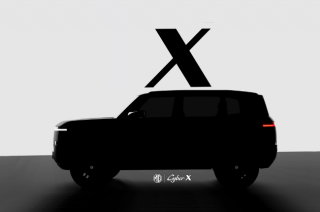
Just when we thought it’s almost over. It may seem that this quarantine period will occur longer than expected. Just last night, August 2, 2020, President Rodrigo Duterte alongside with the national government decided to shift to a stricter modified enhanced community quarantine (MECQ), mainly targeting areas under the more relaxed General Community Quarantine (GCQ).
MECQ will commence August 4 at midnight and will last until August 18, 2020. Places covered by the enhanced quarantine include Metro Manila, Rizal, Laguna, Cavite, and Bulacan. The original plan of the Government was to observe the more relaxed GCQ from August 1 to 15, although due to the strong recommendation of medical professionals and frontliners for a stricter quarantine and given the strong rise of confirmed COVID-19 cases, the government then decided to transition to MECQ.

Given the sudden reinforcement of this stricter quarantine, how does this affect our daily commuters and motorists on the road? To start off, the guidelines state that persons aging below 21 years old and who are at least 60 years old and above should stay at home. Moreover, pregnant women and even persons that reside with such individuals are also advised to stay home given the probable risk.
Then again, exemptions are applied to those who need to go to the supermarkets, drugstores, banks in order to acquire their basic necessities. As for employees, they can only go to work as long as its company is business approved to operate under MECQ.
Other personnel essential to the population or better yet known as Authorized Persons Outside Residence (APOR) including government employees, emergency respondents, healthcare workers, and many more are therefore allowed to be out during MECQ.
Motorists should also be fully aware that checkpoints are now back on the road. As expected, this should cause some traffic to build up. Like its previous implementation, checkpoints will then be managed by members of the Philippine National Police (PNP) alongside with select representatives of the Armed Forces of the Philippines, healthcare officials and staff.
Notably, you can drive your personal vehicle as long as you’re an APOR with a correct and valid identification or papers that shall serve as proof. Likewise, private vehicles can also be used by those who are procuring basic goods and services. Do take note that the DOTr specified that only two persons per row will be allowed in vehicles this MECQ.
Two-wheeled transport vehicles are still allowed although back riding is strictly prohibited. Again, only an APOR is exempted from the said guideline. Lastly, worth noting is that quarantine passes will be required once again, as the following areas mentioned shift back to MECQ.

Under the rule of MECQ, the majority of public transportation vehicles including buses, jeepneys, taxis, and TNVS will therefore not be allowed to operate. Moreover, all railway transportation such as PNR, LRT-1, LRT-2, and MRT-3 will also be suspended under MECQ. Although tricycles will not be allowed as well, certain exceptions may apply depending on the guidelines by the DILG and LGUs.
Like before, companies will have to contract private shuttles for their employees in order to be allowed to operate. On the side note, its shuttle needs to acquire a special permit from the LTFRB before proceeding.
A violation of quarantine measures will mean either being turned back or worse, fines and penalties.
Latest News
-
MG teases the Cyber X—Could it be headed for PH next? / News
MG will soon launch the all-new Cyber X at the upcoming Shanghai Auto Show. The new model brings a fresh, boxy design and might be MG’s next electric or hybrid vehicle. More details will be...
-
MIAS 2025: GAC Motor Philippines brings excitement with M8 PHEV debut and exclusive offers / News
GAC starts the journey toward electrification with the unveiling of the M8 PHEV, a hybrid version of its luxury minivan.
-
MIAS 2025: Chery presents three new models for the PH market / News
The Tiggo nameplate gets three new additions as Chery showcased at the 2025 Manila International Auto Show.
Popular Articles
-
Cheapest cars under P700,000 in the Philippines
Jerome Tresvalles · Sep 02, 2024
-
First car or next car, the Ford EcoSport is a tough package to beat
Jun 18, 2021
-
Car Maintenance checklist and guide – here’s everything you need to know
Earl Lee · Jan 12, 2021
-
Most fuel efficient family cars in the Philippines
Bryan Aaron Rivera · Nov 27, 2020
-
2021 Geely Okavango — Everything you need to know
Joey Deriquito · Nov 19, 2020
-
Family cars in the Philippines with the biggest trunks
Sep 20, 2023
-
Head to head: Toyota Rush vs. Suzuki XL7
Joey Deriquito · Oct 28, 2020
-
Why oil changes are important for your car
Earl Lee · Nov 10, 2020
-
2021 Kia Stonic — What you need to know about it
Joey Deriquito · Oct 16, 2020
-
Top 7 tips for buying a used car in the Philippines
Joey Deriquito · Nov 26, 2020



